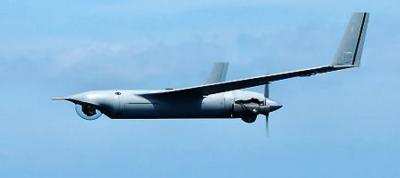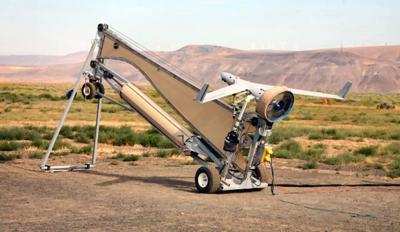Thu, May 15, 2014
Unmanned Aircraft Monitored Wildfire At Wollemi National Park In Australia
Australia-based Insitu Pacific recently conducted a successful demonstration for the New South Wales Rural Fire Service (NSW RFS) using the ScanEagle unmanned aircraft system (UAS).

The demonstration took place in January over the Wollemi National Park northwest of Sydney, where fires have burned more than 35,000 hectares of bushland since December 2013. Insitu Pacific successfully demonstrated the operational utility of ScanEagle to monitor and report on the movement of the fire front at night – a task rarely undertaken at low altitude by manned aircraft due to the high risk factors involved.
The success of the trial is attributed to a collaborative effort between Insitu Pacific and General Dynamics Mediaware. Insitu Pacific employed General Dynamics Mediaware's next-generation video exploitation system, D-VEX, to stream full-motion video imagery alongside geo-location information in near real time. Fire commanders used the imagery to assess the movement of the fire front and pinpoint the locations of high-risk spot fires well ahead of the front itself. As a result, response assets were mobilized more quickly and safely, because their position relative to the location and movement of the fire could be actively monitored from the emergency services headquarters.

"This technology is a game changer for emergency services and first responders," said Insitu Pacific Managing Director Andrew Duggan. "We have proven systems that offer substantial capability advantages in this domain and will also enhance the safety of the personnel responding to an emergency. This event was a great success and the main objective now is to continue to work with CASA to enable flexible airspace approvals for various emergency response scenarios."
"Combining the imagery captured by the ScanEagle with D-VEX's next-generation video analytics provided the New South Wales Rural Fire Service with enhanced situational awareness and real-time actionable intelligence to extend the capabilities of firefighting services around the clock," said General Dynamics Mediaware Chief Technology Officer Kevin Moore. "We see this demonstration as the start of a new type of fire response that has the potential to save agencies time, money and most importantly, lives."
(ScanEagle images from file)
More News
A Puff Of Smoke Came Out From The Top Of The Engine Cowling Followed By A Total Loss Of Engine Power On May 9, 2025, about 1020 mountain daylight time, an experimental amateur-buil>[...]
From 2022 (YouTube Edition): Jenny, I’ve Got Your Number... Among the magnificent antique aircraft on display at EAA’s AirVenture 2022 was a 1918 Curtiss Jenny painstak>[...]
Very High Frequency (VHF) The frequency band between 30 and 300 MHz. Portions of this band, 108 to 118 MHz, are used for certain NAVAIDs; 118 to 136 MHz are used for civil air/grou>[...]
“From approximately November 2021 through January 2022, Britton-Harr, acting on behalf of AeroVanti, entered into lease-purchase agreements for five Piaggio-manufactured airc>[...]
Microburst A small downburst with outbursts of damaging winds extending 2.5 miles or less. In spite of its small horizontal scale, an intense microburst could induce wind speeds as>[...]
 NTSB Prelim: Lee Aviation LLC JA30 SuperStol
NTSB Prelim: Lee Aviation LLC JA30 SuperStol Classic Aero-TV: Curtiss Jenny Build Wows AirVenture Crowds
Classic Aero-TV: Curtiss Jenny Build Wows AirVenture Crowds ANN's Daily Aero-Term (05.30.25): Very High Frequency (VHF)
ANN's Daily Aero-Term (05.30.25): Very High Frequency (VHF) Aero-News: Quote of the Day (05.30.25)
Aero-News: Quote of the Day (05.30.25) ANN's Daily Aero-Term (05.31.25): Microburst
ANN's Daily Aero-Term (05.31.25): Microburst




